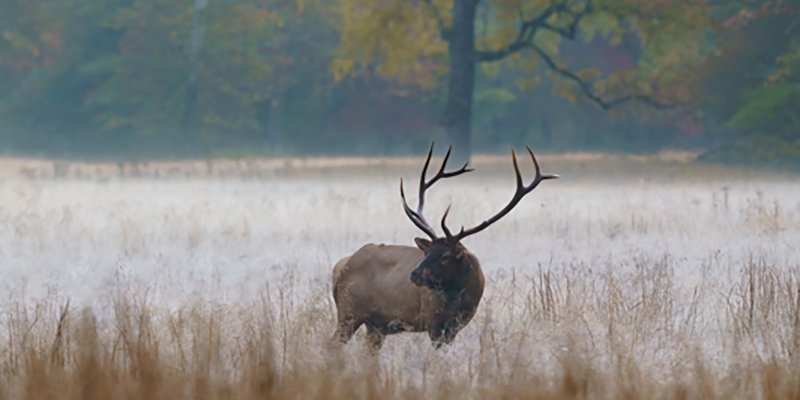Elk have excellent eyesight due to the placement of their eyes along the side of their heads. This gives them a 280° field of vision, which helps them spot predators on the horizon.
Cataloochie Valley (above) is one of the most popular spots to see elk since they’re commonly found roaming here.
The round-horned elk, or Roosevelt’s elk (after Theodore) is related to the elk currently residing in our region.
Elk health and safety is monitored using many different methods, including recording their size at birth.
Although mating season emboldens male elk, fall is still a great time to see the females—called cows (top)—as well as their young calves.
As part of the park’s efforts to protect the herd, many elk wear a radio collar like the one Joe Yarkovich is outfitting on a cow. This is done in order to track the herd's movements
Although black bears, coyotes, and bobcats may prey on weaker herd members, the elk living in the Smokies have fewer predators than their relatives out West. They’re vegetarians, sticking to a diet of grasses, ferns, acorns, and other plants.
Young elk typically shed their deer-like spots (above) by August to make room for a heavier winter coat.
For good reason, the Cataloochee Valley is one of the most popular places to spot elk. This large bull stands tall in the valley’s morning fog.
When you spot a young elk with velvety antlers, that’s an indication that the bull’s headgear is still growing. When antlers are not fully calcified, they have a fuzzy appearance. The velvet sheds in August, revealing a sharp, strong defense system for the growing bull. Calves stick with their mothers for the first several months of life, as they nurse until around seven months of age.
Calves are born in early summer, weighing as little as 25 pounds. They’re able to stand almost immediately after birth, and nurse for the first several months of life.
Although the rut can inspire competition among bulls, true fighting is rare. More commonly, conflicts are handled with minimal contact.
A bull lets out a yodeling call for all to hear.
Especially in autumn, elk interactions are fascinating to witness up close. Many visit the Great Smokies to observe wildlife in action.
Folks hoping to capture the elk on camera should be respectful of the elk and the park rangers to ensure safety.
